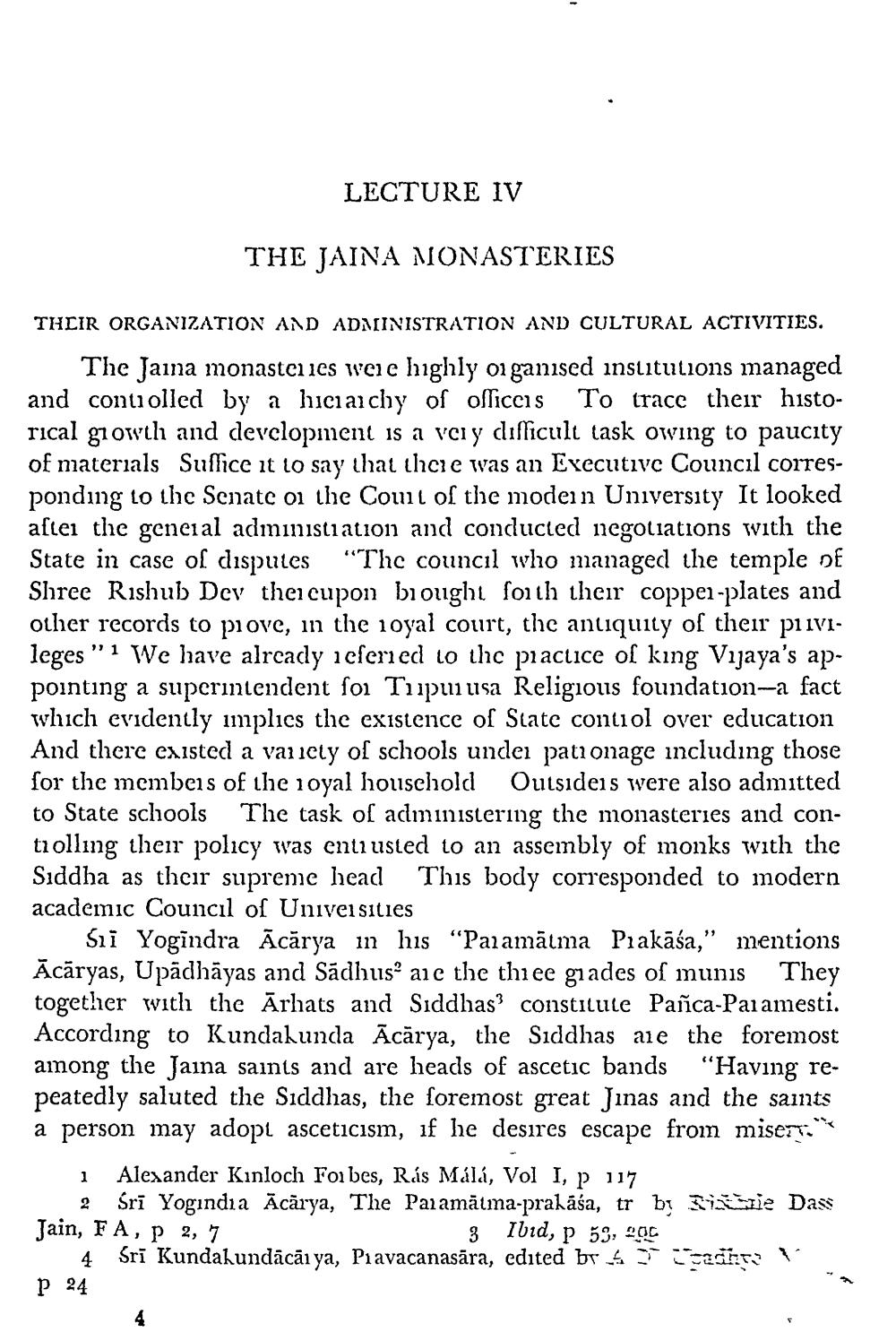________________
LECTURE IV
THE JAINA MONASTERIES
THEIR ORGANIZATION AND ADMINISTRATION AND CULTURAL ACTIVITIES.
The Jaina monasteries were highly organised institutions managed and contiolled by a hiciarchy of officcis To trace their historical growth and development is a very difficult task owing to paucity of materials Sullice it lo say that thcie was an Executive Council corresponding to the Senate oi the Coul of the modern University It looked allei the general adınınıstiation and conducted negotiations with the State in case of disputes “The council who managed the temple of Shree Rishub Dev theicupon biought soith their coppei-plates and other records to piove, in the ioyal court, the antiquity of their privileges” 1 We have alrcady icferied to the practice of king Vijaya's appointing a superintendent soi Tupui usa Religious foundation-a fact which evidently implics the existence of Slate contiol over education And there existed a variety of schools under pati onage including those for the members of the royal household Outsideis were also admitted to State schools The task of administering the monasteries and controlling their policy was enti usted to an assembly of monks with the Siddha as their supreme head This body corresponded to modern academic Council of Univeisities
sii Yogindra Ācārya in his "Paramātma Prakāśa," mentions Ācāryas, Upādhāyas and Sădhus are the three grades of munis They together with the Ārhats and Siddhas constitute Pañca-Paramesti. According to Kundalunda Ācārya, the Siddhas are the foremost among the Jaina saints and are heads of ascetic bands "Having repeatedly saluted the Siddhas, the foremost great Jinas and the saints a person may adopt asceticism, if he desires escape from misery."
1 Alexander Kınloch Foi bes, Rás Málá, Vol I, p 117
2 Śrī Yogindia Ācārya, The Paramātma-prahāśa, tr by S ie Dass Jain, FA, P2, 7
3 Ibid, p 53, 900 4 Sri Kundakundācāı ya, Piavacanasāra, edited br e achta p 24




